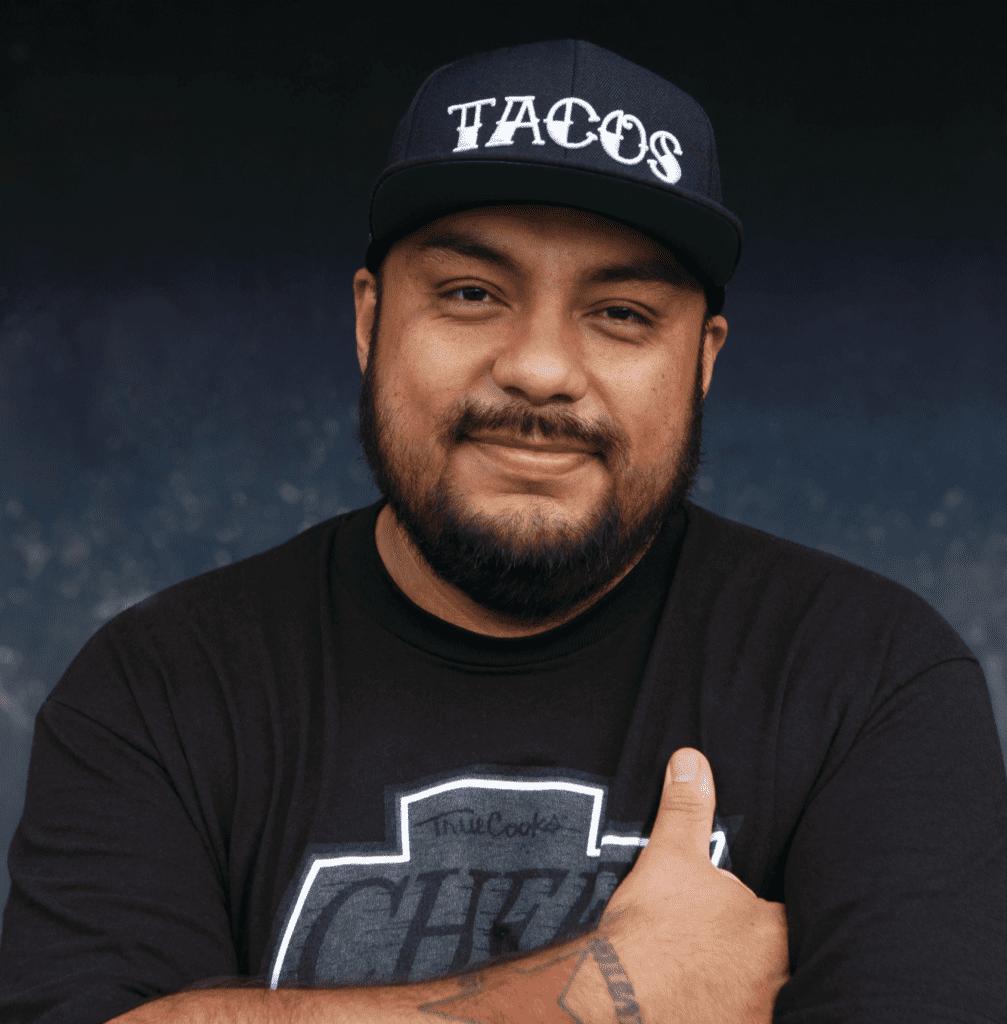
Photographed by Amanda Lopez
So-Cal Birrieros and Taqueros Buck Mexican Tradition
The regional Mexican stew birria is having a well-deserved moment, but it comes with some controversy. At its core, birria is meat simmered in warm spices, various chiles, and canned tomatoes, but opinions on what is right, good, and traditional vary wildly depending on whether the dish comes from Jalisco or Tijuana—two regions with strong birria identities. Some insist “real” birria is made with goat, others say it should be made with beef (and an even smaller percentage say lamb). But most of us grew up eating birria with the same simple setup: a plate of the braised meat topped with a sprinkling of chopped raw onion and cilantro, accompanied by warm tortillas and a Styrofoam cup of consomé, the fatty red broth the meat was simmered in. Today, there’s a whole new birria world out there thanks to innovative birrieros and taqueros in southern California, who are upsetting traditionalists by adding copious amounts of cheese to extra-indulgent birria creations that spread like wildfire across social media. No dish exemplifies this newfound obsession quite like quesa birria tacos.
Any taco can transform into a quesataco with the addition of cheese, but quesabirria tacos—in all their crusty, gooey, and meaty glory—are commonly made by dunking the tortilla in consomé and then griddling it on both sides before sprinkling it with cheese, topping it with birria, chopped onions, and cilantro, and folding it into its taco destiny. In another iteration, sometimes referred to as a taco vampiro de birria, the cheese is griddled before the tortilla is bonded on top and the birria is added. Another variation that some enterprising taqueros marketas “keto” has no tortilla at all. Instead, griddled cheese—brown on one side, melty on the other—replaces the sacred carb entirely. The most-used cheese in all these iterations is Monterey Jack, and it’s the one Teddy Vasquez swears by.
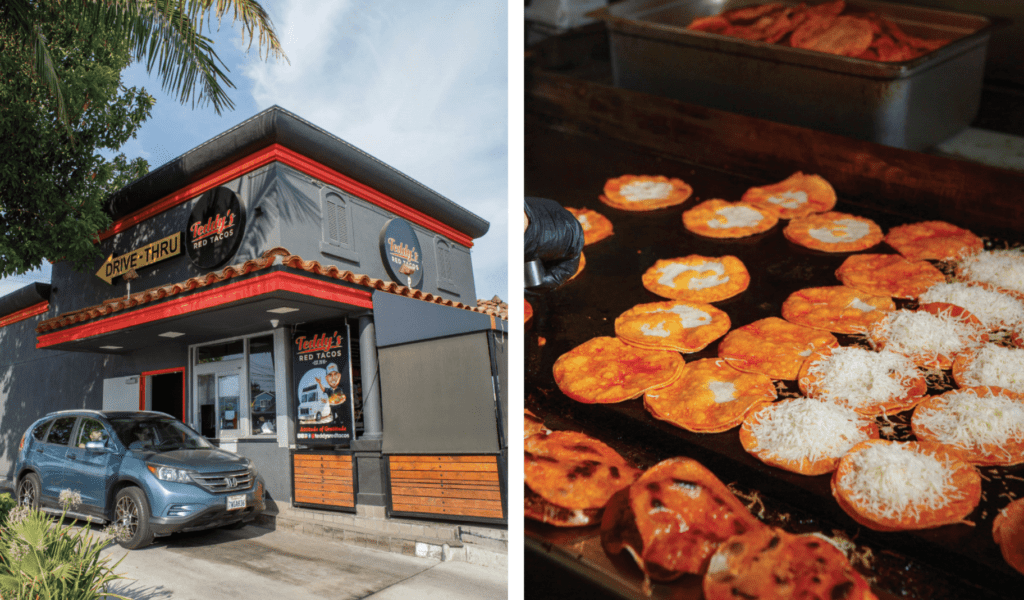
Vasquez has had a meteoric rise to food fame in Los Angeles as the creator of the chain Teddy’s Red Tacos, a burgeoning birria empire centralized in southeast L.A., but with outposts as far flung asVenice Beach. His tacos are made with birria de res, the Tijuana-style beef variation of the Mexican stew. Teddy’sRed Tacos offers individual vampiro tacos and quesabirria tacos, but by far the chain’s most popular offering is the deluxe plate, a plethora of birria-heavy Tijuana-style snacks that include a quesadilla oozing with beef and Monterey Jack, and a mulita—Monterey Jack and Vasquez’s juicy, marinated-overnight birria encased between two lightly griddled tortillas.
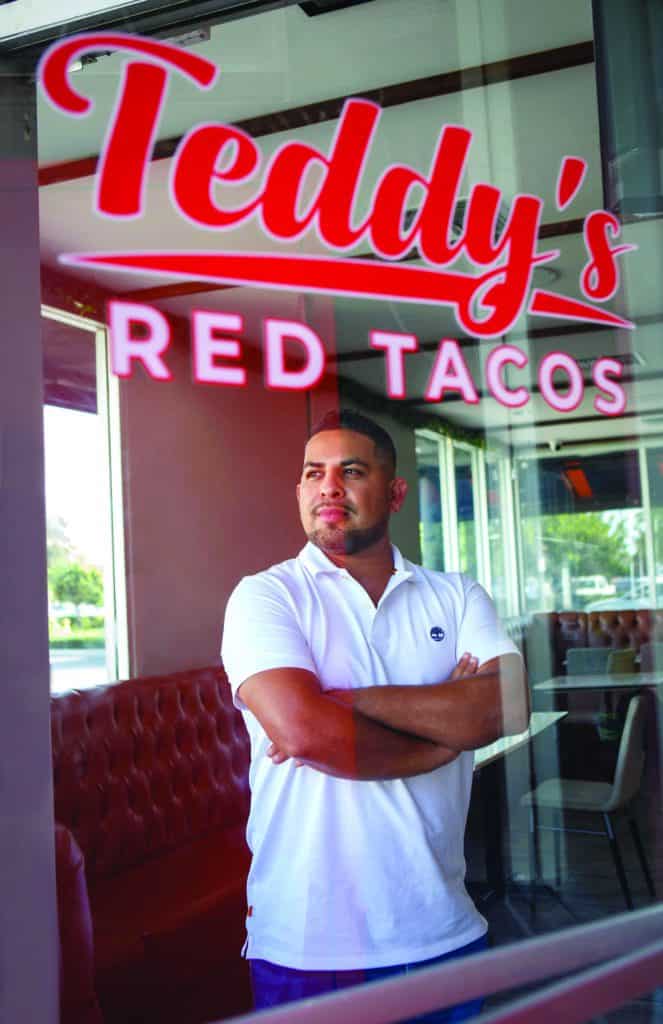
“One of the things I was faced with early on is that people would say, ‘Hey, I’m used to eating birria in a bowl with tortillas on the side,’” Vasquez says. “But that’s old school; the older generation don’t want cheese anywhere near their birria. The younger generation loves cheese with their birria. They’ll add cheese to literally anything.”
Vasquez says that when he was starting out, he experimented with different cheeses, and went with Monterey Jack because of how creamy the cheese gets when it melts and how crispy it gets on the griddle. But not everyone agrees that Monterey Jack, an American original first made by Mexican Franciscan Friars in the 1700s in Monterey, California, is birria’s best friend.
Chef Juan Garcia has strong opinions about birria. His is unapologetically #TeamGoat. In fact, he’s known for the tagline, “Si no es chivo, no es birria.” The fourth-generation birriero is also anti-Monterey Jack. Garcia says he understands why so many taqueros use it—it’s melty, creamy, and affordable—but notes that it can also be gloopy, and it has a slight tang at the end that detracts from the birria, which he feels strongly should be the star of the show.
Garcia, who was born in Jalisco, the original home of birria, is the co-founder of Compton California’s Goat Mafia, part pop-up, part catering business that specializes in traditional birria and modern Mexican cooking. Garcia’s birria recipe is more than 100 years old, created by his grandfather and passed down to generations of Garcia men on both sides of the border. The secret now lies with Garcia, who is tightlipped on the specifics, but says ginger, chocolate, and citrus make his family’s version sing.
In 2020, Bon Appétit named Goat Mafia’s birria taco as one of the best in the country, but to locals in the know, the company created a historical dish nearly a decade earlier. Garcia can’t prove it, but he thinks he was the first birriero in Los Angeles to add cheese to birria. In 2011, before Garcia went to culinary school, Goat Mafia’s menu included a “Chivadilla,” a mulita made with birria, Oaxaca cheese, and a smear of goat cheese, all drizzled with crema.
“We got a lot of pushback on the Chivadilla,” Garcia says. “Back then, the only people who would try it were foodies or open-minded younger people. The old school people wouldn’t even look at it because it wasn’t traditional, which was funny because our birria is really traditional. At the time, my thinking was Chivadilla that I wanted us to stand out by using goat products in different forms. I wanted to create a new dish that presented birria to the world in a different way.”
Goat Mafia still has the Chivadilla on the menu. The current iteration is justas beloved as the original, but it’s a far cry from it. “It’s kind of a dessert-style quesadilla,” Garcia says. The goat cheese remains, but the birria has been replaced by cooked beets, and the mulita is topped with agave and jocoque (a fermented dairy product, sort of a sour cream/buttermilk hybrid) and a sprinkling of pepitas and dill. “It’s not for everybody,” he says. “But it sells out every time we make it.”
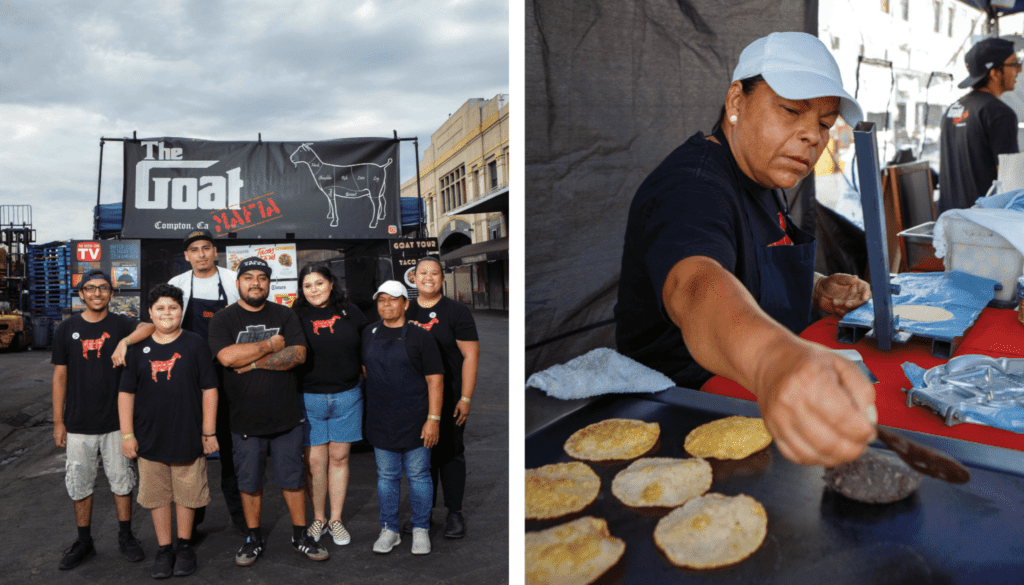
Birrieros, taqueros, and street vendors of all kinds are the lifeblood of Los Angeles, and they are finally getting the appreciation they deserve. In large part, this is thanks to L.A. Taco. More than a decade ago, this food and culture outlet launched Taco Madness, an annual tournament-style bracket competition that pits the city’s best tacos against each other. It’s kind of like the World Cup of tacos, and it has the power to turn relatively unknown taqueros into well-known entities with bustling businesses. Broadly, L.A. Taco writes about taqueros with the respect, care, and concern once only reserved for James Beard Award-winning chefs, and indeed some of these taqueros become James Beard Award winners. Tacos y Que made its food media debut in the outlet in March 2021, and just a few months later the taco truck’s co-founder, Bryant Siono, announced a brick-and-mortar location in Whittier, California.
When the pandemic hit, Siono, Fabian Chavez, and Joe Mendez—all musical directors and musicians working with some of the industry’s biggest names—found themselves with a lot of time on their hands as show after show got canceled. One day over some carne asada, they decided to do a pop-up—and the rest is history.
Siono, who was the musical director for Jennifer Lopez in his pre-taquero life, said the goal of Tacos y Que was to pushboundaries without being “super bougie.”In L.A.’s saturated taco market, he argues it’s actually hard to find tasty and inventive Mexican food that veers off the beaten path. This is part of the reason Tacos y Que skews the birria trend entirely.
Tacos y Que is also an outlier for choosing Sonoran-style flour tortillas instead of corn, and every taco has a layer of crispy cheese on the tortilla, whether it’s filled with potatoes and Soyrizo, chicken tinga, or bulgogi—a throwback to L.A.’s Korean taco craze. Most notable, however, is Taco y Que’s keto burrito. Siono once watched a customer pick Taco y Que’s juicy carne asada out of his taco using a fork. Offended, Siono told the man that the flour tortilla was the best part.
“He explained he was on keto, and I was like, ‘Give me a second,’” Siono laughs. “I took it as a challenge. I went to the griddle and threw some Monterey Jack cheese in a big circle and then I threw some carne asada inside and rolled it up, letting it get all toasty. That was the creation of the keto burrito; it was totally on the fly.”
The sort-of-creamy, sort-of-tangy, onion-heavy purple cabbage slaw that tops it is the perfect bright accompaniment to the ultra cheesy burrito that somehow doesn’t feel heavy and greasy. It’s a dish that both borrows from trends and traditions, and yet manages to be a unique and distinct Los Angeles creation.
“Tacos are life, period,” Siono says.“They’re dear to everyone’s heart. I don’t care if you’re not Mexican or not from L.A. Everybody loves tacos, and who doesn’t love cheese?”
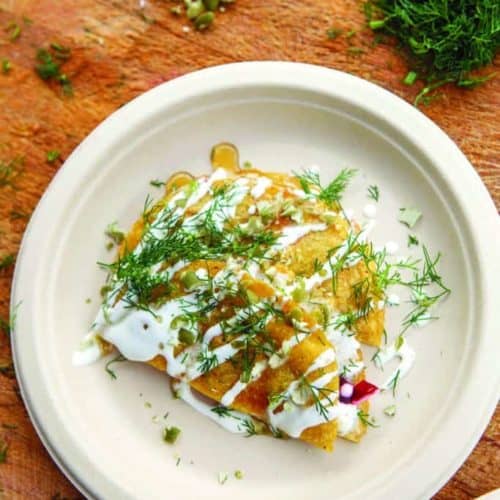
Goat Mafia’s Chivadilla
Ingredients
- 2 large beets
- 4 ounces fresh goat cheese local if possible, room temperature
- ½ cup pepitas
- 8 to p-quality corn tortillas preferably homemade
- Jocoque or crema Mexicana
- Agave syrup
- Small bunch of dill
Instructions
- ►Preheat the oven to 450°F.
- ►Wrap beets individually in foil and place directly on rack in oven center. Roast for 30-45 minutes or until you can pierce beets easily with a fork. Allow to cool. Peel beets and cut into small dice.
- ►Using an electric stand or hand-held mixer, whip goat cheese until fluffy.
- ►In a food processor, pulse pepitas until they are broken into pieces, being careful not to turn into powder.
- ►In a dry skillet or on a griddle, warm tortillas and set aside, covered with a kitchen towel. Spread one warm tortilla with a thick layer of goat cheese, top with a layer of diced beets and salt lightly. Place a second tortilla on top. Repeat with remaining tortillas.
- ►Heat a comal (Mexican griddle) or heavy skillet (preferably cast iron) over medium-high heat and heat filled tortillas on both sides until hot and the cheese has just begun to ooze. Cut tortilla in half and place on a serving plate. Drizzle with jocoque or crema and agave syrup, sprinkle with pepitas, and garnish with sprigs of dill.




